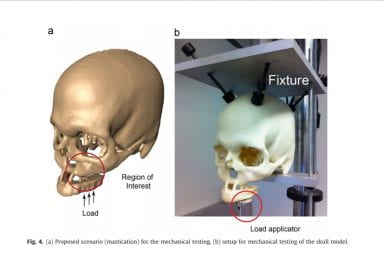
“Beech Leaf Disease” is a newly discovered plant disease spreading to beech trees across Northeast Ohio. Credit: Courtesy of Carrie Ewing
Beech trees are dying and Ohio State scientists are looking to find a solution to the mysterious deadly disease that is causing it.
Provisionally named “Beech Leaf Disease,” or BLD, this unidentified and potentially lethal tree illness causes beech leaves to curl and fall off prematurely. Since its discovery in 2012, the disease has spread from Lake County, Ohio, to 10 other counties across Ohio, Pennsylvania, New York and southern Ontario.
According to a paper published in “Forest Pathology,” symptoms of BLD initially manifest as dark green bands on the lower leaves of the tree. As symptoms spread throughout the tree, the leaves begin to wrinkle and die along with branches.
“We are quite worried,” Pierluigi Bonello, a professor of plant pathology at Ohio State and an author of the paper, said. “Beech forests run all the way from New England down to Georgia, so it’s a very important species.”
Eventually, the tree could die, with increased mortality rates for younger trees. Because of BLD’s rapid and unexpected spread, scientists like Bonello are calling for “substantial resources” to be invested toward understanding this disease and identifying its cause.
“If you want to do justice to this issue, you’d be talking about millions of dollars invested in research,” Bonello said. “But right now, we are talking about a couple hundred thousand dollars. Our own project has been funded at only $100,000, and that includes overhead.”
Bonello said the issue currently lies in trying to identify the disease.
“So far, nobody has any strong evidence for any particular causal agent,” Bonello said.
Carrie Ewing, a Ph.D. candidate in Ohio State’s Environmental Sciences department and lead author of the paper in “Forest Pathology,” is involved in a project to determine whether bacteria, viruses, fungi or phytoplasma — a bacterial parasite known to cause diseases in plants — could be the pathogens involved. Alternatively, scientists with the U.S. Department of Agriculture forest service are trying to find out if a nematode — a parasitic roundworm — might be responsible.
Ewing said a widespread loss of beech trees could be devastating for the forest ecosystem of eastern North America.
“Beech trees provide habitat for bird species and many other woodland organisms,” Ewing said. “They also provide food through beech nuts to squirrels, bears and birds, among others.”
Additional cause for concern comes from the fact that the disease has appeared on European and Oriental beech tree species grown in American arboretums, Ewing said, suggesting a potential for the disease to spread to other parts of the world if proper precautions aren’t taken.
Bonello pointed toward a substantial number of cases where man has failed to stop plant pathogens before it was too late.
“You can mention chestnut blight, white pine blister rust, sudden oak death,” Bonello said. “There are plenty examples of pathogens that have been introduced that we have failed to either recognize initially, to contain, or to eradicate.”


